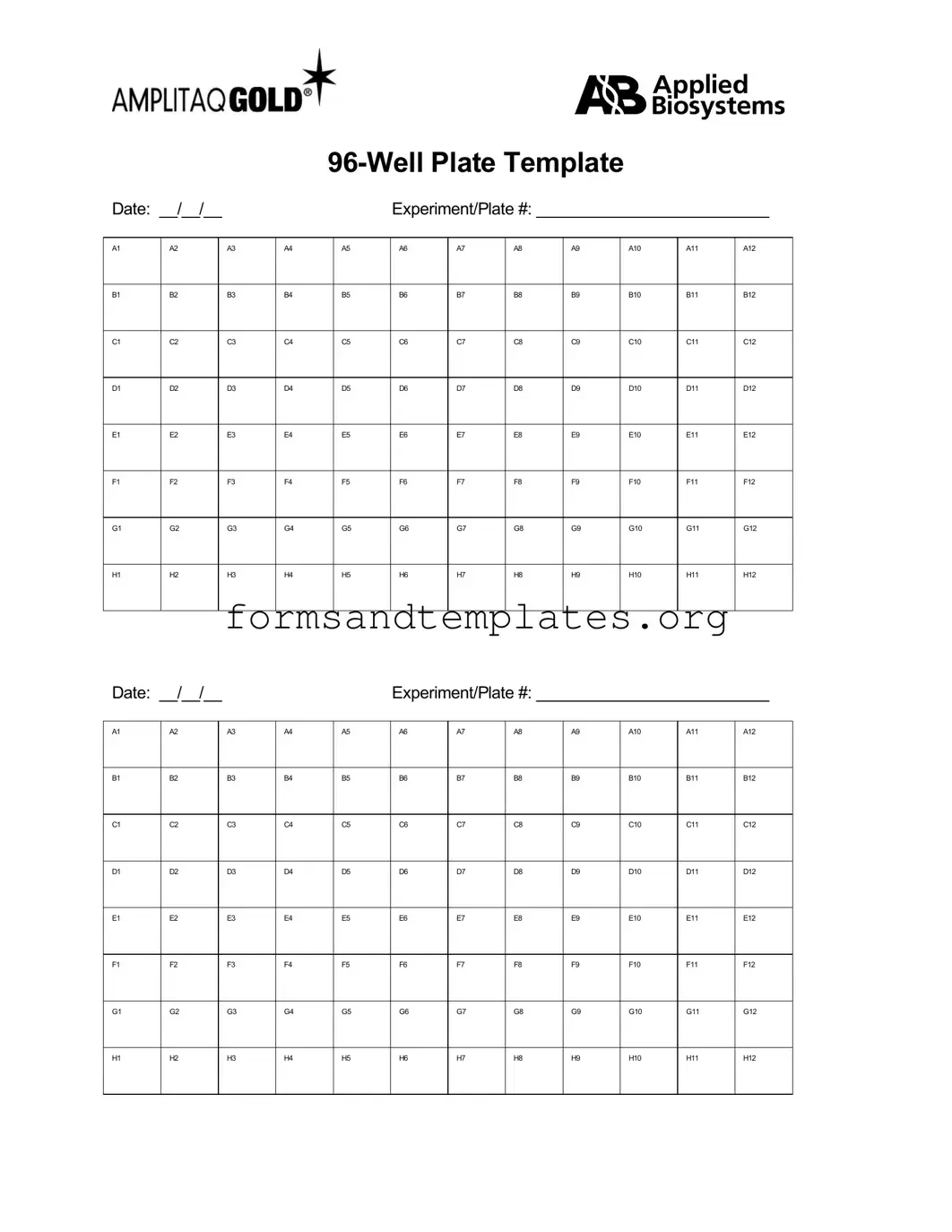The 96 Well form is primarily used in laboratory settings for organizing and documenting experiments that involve 96-well plates. These plates are commonly utilized in various scientific fields, including biology and chemistry, for tasks such as sample storage, assays, and reactions. The form helps ensure that data is accurately recorded and easily accessible for analysis.
Filling out the 96 Well form requires attention to detail. Follow these steps:
-
Start by entering your name and contact information at the top of the form.
-
Identify the experiment or project title.
-
For each well, record the sample information, including the type of sample, concentration, and any relevant identifiers.
-
Ensure that you note any controls or standards used in the experiment.
-
Double-check all entries for accuracy before submitting the form.
Yes, it is essential to follow a consistent format when entering data on the 96 Well form. Use clear and concise labels for each well. Typically, you should use alphanumeric codes to represent different samples. For example, you might label wells A1, A2, B1, and so forth. This format helps prevent confusion and ensures that anyone reviewing the data can easily understand it.
If you notice an error after you have filled out the 96 Well form, do not panic. Cross out the incorrect entry neatly, and write the correct information next to it. Make sure to initial the correction to indicate that it was made by you. In some cases, it may be necessary to notify your supervisor or lab manager about the change, especially if it affects the experiment's integrity.
Absolutely! The 96 Well form is versatile and can be adapted for various types of experiments. Whether you are conducting enzyme assays, PCR reactions, or cell culture, you can modify the form to suit your specific needs. Just ensure that all relevant details for your particular experiment are included.
Submission procedures for the 96 Well form may vary depending on your laboratory's guidelines. Generally, you will need to submit a physical copy to your supervisor or designated personnel. In some cases, electronic submission may be acceptable. Be sure to clarify the preferred method of submission with your team to avoid any delays in processing your data.
The data recorded on the 96 Well form is typically compiled and analyzed as part of the overall experiment. Researchers will often input this data into software for statistical analysis or reporting. Depending on the laboratory's protocols, the data may also be archived for future reference or shared with collaborators.
If you have questions or need assistance with the 96 Well form, reach out to your lab supervisor or a senior researcher. They can provide guidance on how to properly fill out the form and address any specific concerns you may have. It’s important to seek help early to ensure that your data collection is accurate and efficient.

